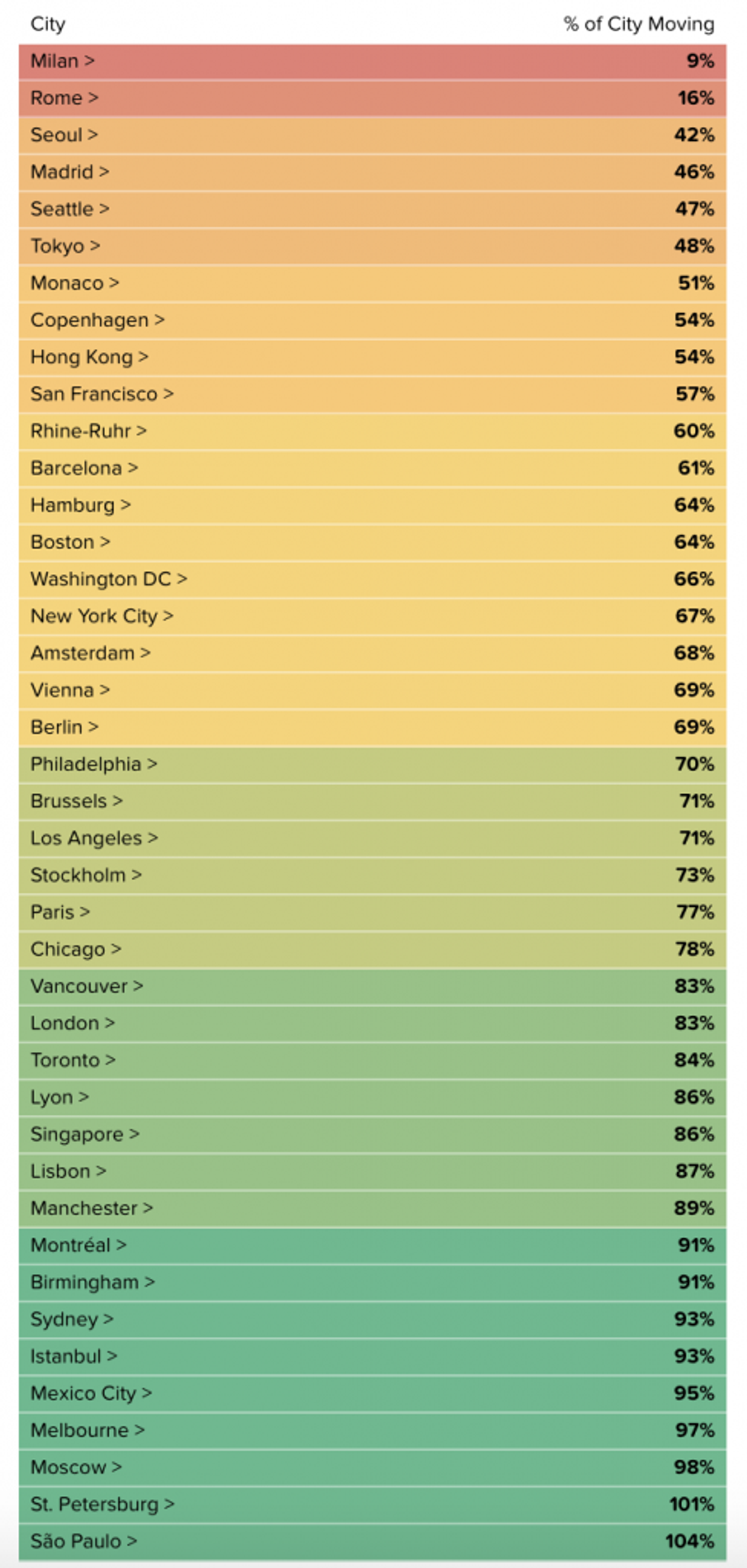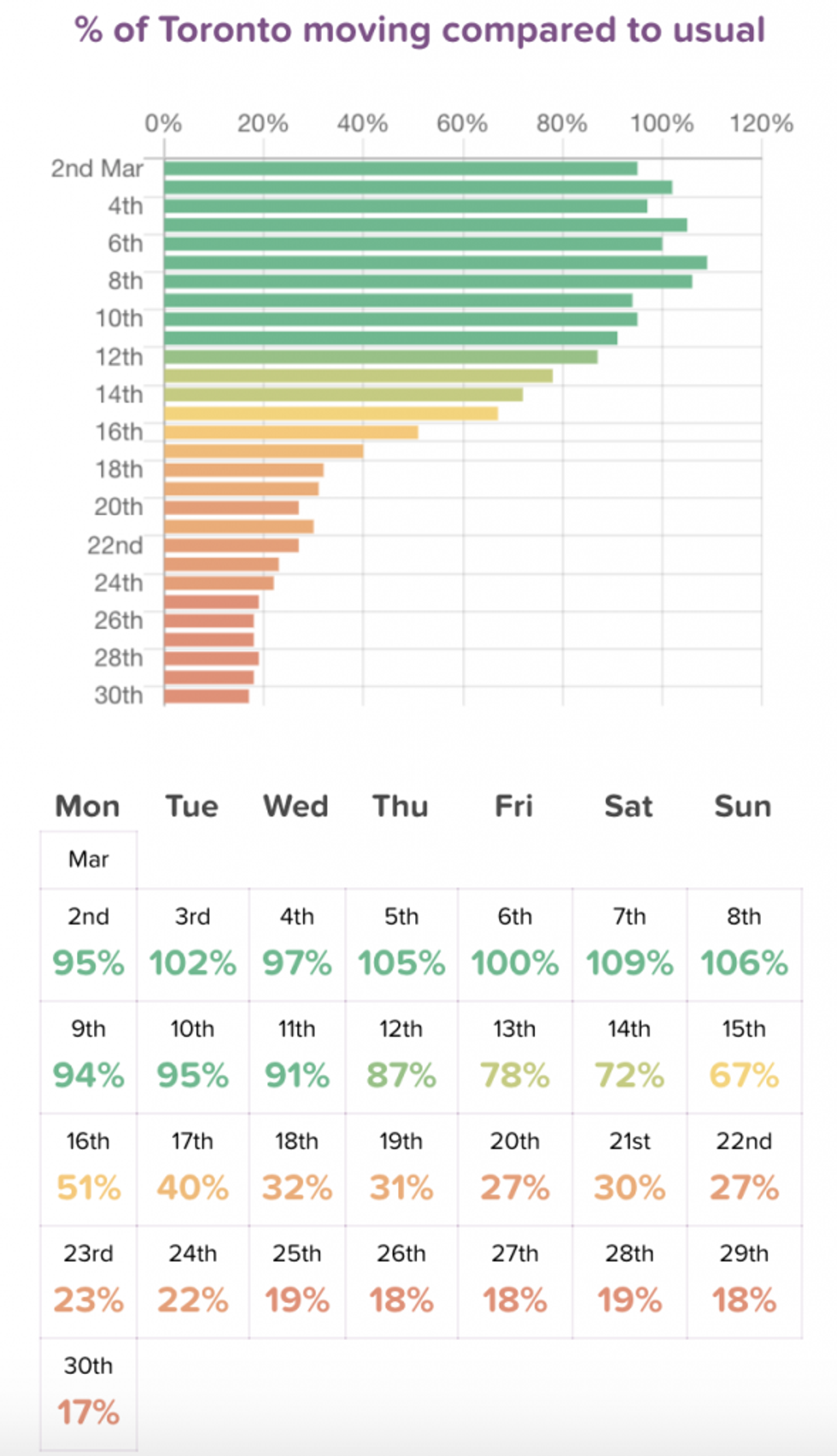As we enter week three of social distancing measures in Toronto, it's clear that residents have significantly reduced their movability throughout the city as local, provincial, and federal officials have urged citizens to stay home to limit the spread of COVID-19.
However, while the decrease in movability in Canada's largest city is significant, it doesn't compare to the likes of New York City or some cities in Italy, where officials have ordered residents to stay at home.
RELATED:
- Toronto’s Real Estate Market Just Took a Nosedive
- Toronto’s Public Transit Ridership Drastically Declines Amid Coronavirus Outbreak
- How to Ride Public Transit Safely During the Coronavirus Pandemic
This is according to a mobility index from the urban mobility app Citymapper, which studies app usage and trip-planning to measure current activity in a city against a more typical usage period.
According to data from Citymapper, movement in 41 major cities in Europe, the Americas, and Asia have altered greatly in the past few weeks, with many cities currently at a standstill as officials imposed lockdowns and restrictions earlier this month to slow the spread of the deadly virus, which has already claimed the lives of 40,733 people worldwide.
This is the percentage of their populations that world cities saw moving compared to a usual week, ending on Sunday 15th March.

The index shows how COVID-19 has effected how major cities, like Toronto, move, which is why the company says it's confident the index "represents a real change." Just look at Toronto drop from 80%+ in mid-March to less than 20% by the end of the month.
According to the data, Toronto is currently operating below 20% of the movement it usually does, which is down significantly from the beginning of the month when residents were operating between 95% and 109%.
From the above data, you can see how movability started to take dive around Monday, March 10th, which was the first official work from home day in Toronto. In the days to follow, movability continued to decline, before hitting its lowest of 17% on March 30.
Which doesn't come as much of a surprise as Ontario is currently under a state of emergency and most residents are working from home or avoiding taking transit to minimize their exposure to COVID-19. This drop in movement is very much a good thing.
It is interesting to see how Toronto compares to a city like New York, where residents are currently under a stay-at-home order until at least April 15. The CMI shows that at the start of the month, movement in both cities was around 100%, however, that number has dropped substantially, with New York residents only moving around at about 8% normal and Toronto at 17%. If Toronto, already under a state of emergency, were to receive a stay-at-home order, it's possible that its current rate of movement could be halved once again.






















